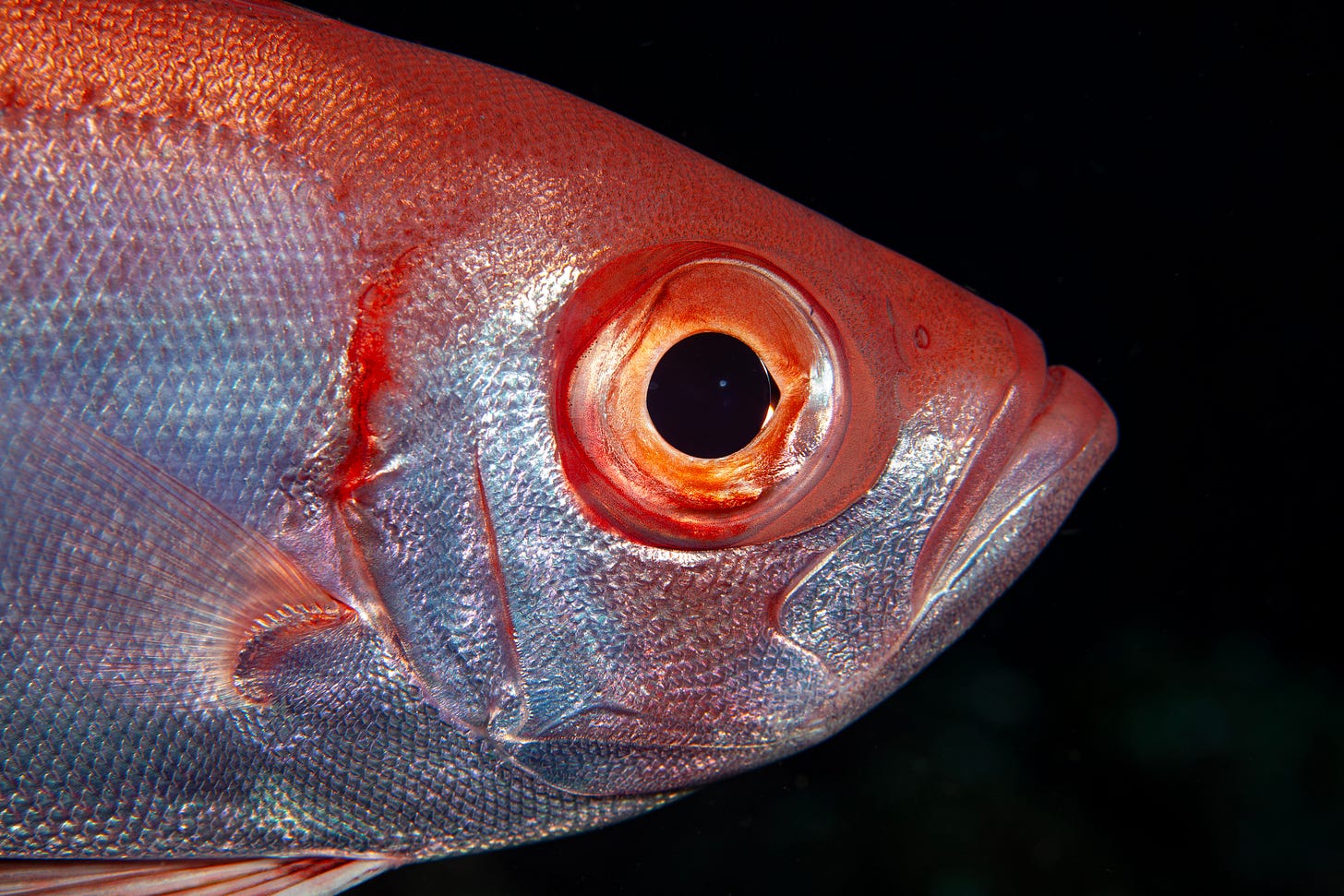The elusive flue whale, synchronised bowheads, and a dolphin with scoliosis
Big Blue Bulletin #48
Welcome to the latest edition of the Big Blue Bulletin – things have changed just a little bit around here as featured stories will now focus on whales, dolphins, and porpoises, with a little bit of commentary from me thrown in as well. Still, you can expect good news, bad news, and a cute creature in your inbox every Friday.
Let’s dive in 🐬
Ocean news
🗞️ Big news of the week -
🐋 What ‘the world’s loneliest whale’ may be telling us about climate change
Nearly 40 years ago, a mysterious whale was recorded calling out in the Pacific at 52 hertz, a frequency too high-pitched for a blue whale but too low for a fin. The whale behind it has never been seen, only heard, and it became known as “the loneliest whale” because no other whale may exist than can answer its call.
But other scientists suggest something else entirely: that Whale 52 might be a hybrid. As warming seas shift migration and breeding grounds, fin and blue whales are crossing paths more often—and mating. One study even found fin whale DNA in 3.5% of North Atlantic blues even though the species diverged 8.35 million years ago. If Whale 52 is a hybrid, then its call could be more than just a mystery, it could be a signal of yet another way that climate change is changing the ocean.
🏄♀️ Rare White Pygmy Killer Whale Spotted Off Hawaii
A white pygmy killer whale calf has been spotted off the coast of Oahu, swimming alongside its pod in a rare encounter that’s left researchers very excited. The footage, captured by safety swimmer Travis Woo during a dolphin tour, shows the pale calf among more typically coloured pod members.
Believed to be a pygmy killer whale based on its fin shape and distinctive white lips, scientists are now working to determine whether the calf is albino—a condition that would require genetic testing and a closer look at its eyes. Either way, it’s not every day a white blackfish is spotted in Hawaiian waters.
🦴 Rare discovery as dolphin with scoliosis washes up on Cornwall beach
Volunteers with Cornwall Wildlife Trust’s Marine Strandings Network made an unusual find on Sandymouth Beach recently when a young common dolphin with scoliosis washed up. Believed to be around 18 months old, the dolphin’s curved spine is thought to be congenital, not caused by injury.
“It was of weaning age and the fact that it could keep up with its pod was rare as [dolphins] swim quite fast, so it’s amazing it lived for as long as it did” said Connie Morris, owner of a company which educates people about the marine environment. Dolphins are fast swimmers, and survival with such a condition is rare but likely made possible by the support of its pod. The dolphin has now been sent for post-mortem analysis to better understand how its condition affected its life at sea.
🏊 Bowhead whales somehow dive in synchrony regardless of distance
Researchers tracking bowhead whales in the Arctic have uncovered a surprising pattern: these gentle giants appear to follow the same daily dive rhythm no matter how far apart they are.
Data revealed that the whales tend to stay near the surface at night, diving deeper in the afternoon to follow prey. Even more remarkable, some individuals kept pace with each other’s dive cycles despite being separated by vast distances. It suggests that bowheads may be more socially connected than we realised and can possibly keep in touch across entire ocean basins.
🌱 In 2013, dozens of dolphins died in Florida – scientists just figured out why
In 2013, nearly 10% of the bottlenose dolphin population in Florida’s Indian River Lagoon died in what was deemed an “unusual mortality event.” Many of the survivors were severely underweight, and scientists struggled to figure out exactly why—until now.
Using isotopic analysis (all animals leave a chemical trace in the tissue of what they eat and isotopic analysis picks up on this trace) on stranded dolphins’ tissue, scientists found that the dolphins had shifted from eating energy-rich ladyfish to less nutritious sea bream in the lead-up to the die-off. This was caused by a long-lasting phytoplankton bloom which had shaded out vital seagrass, collapsing ladyfish populations, triggering a devastating food chain reaction, and causing dolphins to switch to less nutritious prey.
Have a great weekend! 📸
Cover image by Grist / Amelia K. Bates / Biodiversity Heritage Library.
Here at Beached we are building a community that can put our brains and resources together to highlight and fund solutions to the problems facing cetaceans. I hope you’ll join our humble community and click subscribe for free or support our work by purchasing the paid subscription.
All Beached posts are free to read but if you can we ask you to support our work through a paid subscription. These directly support the work of Beached and allow us to engage in more conversations with experts in the field of marine conservation and spend more time researching a wider breadth of topics for the newsletters. Paid subscriptions allow us to dedicate more time and effort to creating a community and provide the space for stakeholders to come together, stay abreast of each other’s work and foster improved collaboration and coordination.
One day Beached hope to donate a large percentage of the revenue from paid subscriptions to marine conservation organisations and charities to support their work too. Working together, we can reverse the degradation of our oceans.
Amie 🐋




Especially intrigued with the bowhead whales synchrony diving and the implications this might have for communication over distance. Not so long ago read a book, An Immense World, that explored diverse sensory experiences of animals. This bowhead whale behavior alludes such capability. Fascinating stuff...thanks!
Whale 52, hybrid or not, calling out with no one answering is just heartbreaking…